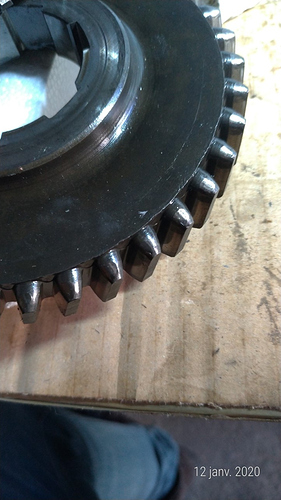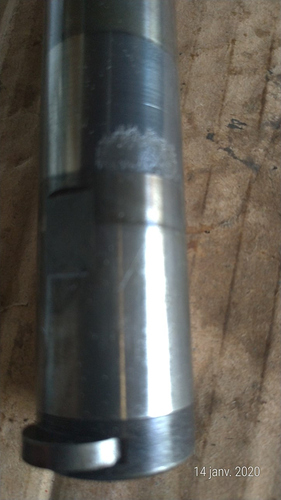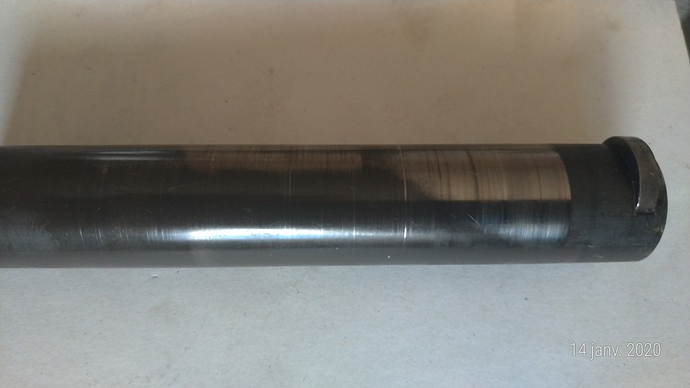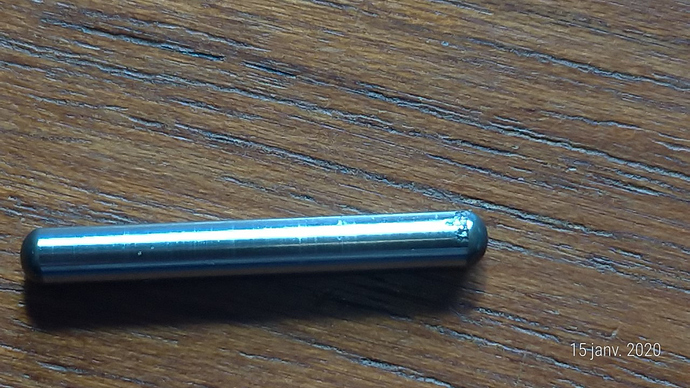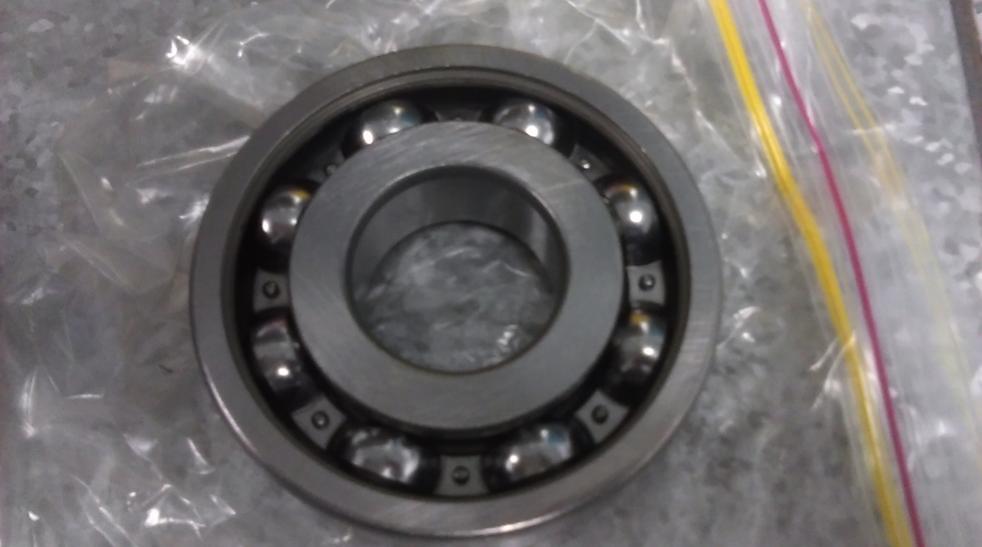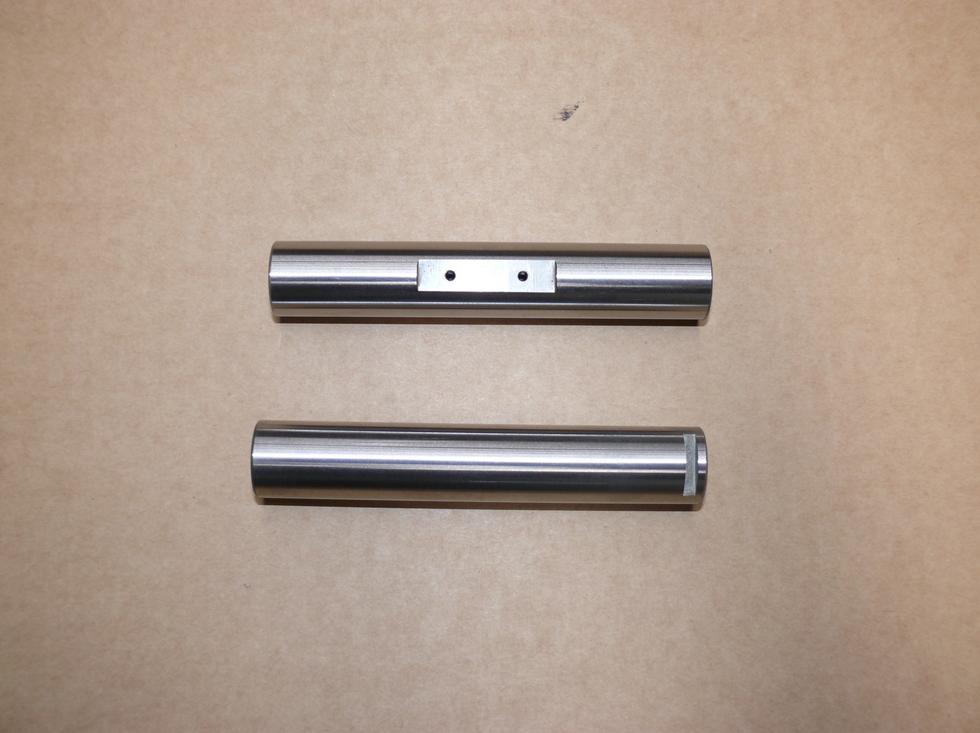The failure you have experienced is unfortunately a too common occurance in the all synchro gearbox.
The layshaft uses a “full complement” needle roller bearing, that other than normal wear, has never been known as an area of failure.
I have been using the full complement 1st. motion shaft bearing for over 40 years without any reported failures.
But the choice is yours.
Jaguar didn’t always get it right, the IRS bearings being a good example of bad application of Needle/Tapered roller bearings.
Thank you both.
I had not remarked the outer cage of the bearing was still inside the firts motion shaft !
So I shall drop it and only the mainshaft has to be machined and sleeved.
Peter, please, what has to be checked on the layshaft countershaft ?
Kind regards.
Christophe
By the way, would you please have a tip to remove the 2 big nuts, on the mainshaft and on the constant pionion shaft ? They were probably never dismounted and I do not succeed.
I examined all the gears and just have a doubt for the reverse one which shows some wear on the rounded edge of the teeth. See the following picture.
From experience, do you think it should be replaced (if available)?
I also examined the bearings which show no play and the needles which do not show any surface defect. Is it useless or wise to replace them at this stage ?
Finally, do you think there is an advantage to change all the springs, balls, plungers and thrust detent plates in the synchonisers ?
Many thanks for your comments.
Christophe.
The wear on the leading edge of the teeth isn’t really all that bad: what you’ll need to pay attention to, is wear to the lay shaft, and to the cluster.
New synchros, bearings, and gaskets and seals, you’ll probably be golden.
Thank you very much Paul.
The lay shaft seems in a good condition.
What do you mean by cluster ? Is it the lay gear ?
Best regards.
Christophe
Yep! 2nd motion cluster/lay shaft.
Yes Christophe the nut on the mainshaft is awkward, unless you can find a suitable ring spammer with a deep offset or box spanner. I have seen many of these nuts that have been removed with a hammer and chisel !! For my own use I made a socket (photo). The thin nut informs that only sensible torque need be applied. No problem with the reverse gear as has been stated.
The layshaft does not have caged needle rollers, they are separate so if you remove the dummy shaft be prepared for the needles to drop out
It is easy advice to say replace every component, but if there is no other problem with the box, jumping out of gear etc leave as is, it’s a question of peace of mind over expense.
If you replace the springs and balls in the selector hubs patience is a virtue !!
unless of course you are geared up for the process.
Any wear on the layshaft countershaft will be obvious, normally at the rear
(First gear) end
Peter B.
Thank you very much Peter.
Very nice socket you built. I shall try to build a simplified version.
Finally, I will not change the needles because they seem good and found them at a very high delivery cost, more than USD 210. But I removed them for examination and will have to put them back in place. Hope it will not be too difficult.
I will probably change the 2 roller bearings for peace of mind. Did not yet place the order.
I happened to remove the springs, balls and tappets in a not-really-intentional way (!) and found some springs are shorter than others, so worn, and some tappets are distorted, so worn also. So I shall have to put them back in place, I do not know yet exactly how, maybe with a kind of compression ring as for the pistons and piston rings (?).
I did not remove the reverse shaft at the bottom of the case. Do you think it would be wise to dismount and examine it ?
Finally I could not yet remove the needle bearing remaining part inside the constant pinion shaft. I have a small oxy-butane torch but maybe the temperature was too low in my garage to get enough butane and it did not work. I tried to remove it on my (little) laze but the metal is too hard and the laze not rigid enough.
I shall try again with the torch inside my home.
Many thanks for your precious pieces of advice.
I would have been happy to visit you if closer to La Flèche.
Are you British or American ?
Kind regards
Christophe
Hello Christophe,
The Roller Bearing you’re referring to I assume are the Front and Rear Ball Bearing Races. The front bearing you will have no trouble in obtaining an equivalent to the original, but the exact rear bearing hasn’t been available for quite a few years.
The Oil Pump drive sleeve is driven by friction only and its important that the Companion Flange nut be tightened well, otherwise there is a real possibility that the drive sleeve will slip. The correct, original bearing is show in the following picture, with the contact between the face of the Drive Sleeve and the face of the bearing inner race indicated. The correct bearing has practically no radius or chamfer between the bore and snap ring end face of the inner race. This affords maximum contact with the Drive Sleeve.
The most common bearing supplied as a replacement for the rear bearing (see the following picture) has a large radius nearly equal to the contact width of the Drive Sleeve shown in the previous picture. The force due to friction is generally independent of the contact area between the two surfaces, but because of the small contact area of bearing with the face of the Drive Sleeve, this area on the Drive Sleeve can compact which inturn diminishes the force being applied by the companion flange nut and therefore the clamping force being applied to the Drive Sleeve. Even with the correct bearing, with maximum contact with the Drive Sleeve, evidence of slippage is seen in the previous picture.
Following is a picture of the two Reverse Idler Gear shafts, from consecutive gearboxes in for work. The wear, shown in the picture, at the Reverse Gear end of shaft is quite common. Accordingly, it would be wise to remove the shaft and inspect it; it’s a simple and relatively quick operation to carry out.
Regards,
Bill
Thank you very much Bill.
I checked and my rear roller bearing has a very small chamfer as shown on your first picture.
As these bearings seem good, I shall thus refrain from changing them !
Following Peter’s comment, I checked more closely the rear end of the countershaft.
See below picture. The wear level is noticeable and can be clearly felt with the nail. I guess it should be replaced ?
Following Bill’comment, I also checked the reverse idler gear shaft. See below picture. It is slightly worn, apparently similar to Bill’s ones. I guess it does not need to be replaced ?
Kind regards.
Christophe
English Christophe ( no apologies )
Yes replace the countershaft and needles.
The springs in the selector hub. -
three long three short is correct
Wash the first motion shaft bearing in petrol to check for noise then add some oil and check again, if not to bad the choice is yours, if you replace make sure the bearing is a known make!
To extract the remains of the needle roller, try driving a small screwdriver between it and the shaft.
The fact that the front of the outer cage is broken away will help.
Peter B.
Hello Peter and many thanks again for all your valuable pieces of advice.
I carefully checked all the individual 58 needles and found surface defects on one. See picture (right hand edge).
Do you think I should change only this one or all of them ?
Kind regards.
Christophe
Dear Bill,
As you proposed it, would it be possible that you give me the mainshaft OD size (for the sleeve I will have made)?
Kind regards.
Christophe.
Hello Christophe,
The same as never having seen a crack get smaller, old bearing never get any fresher. The front and rear bearings are cheap; I would be replacing them, given that you have the gearbox out of the car and stripped down.
The best replacement bearing for the rear bearing is a KSM brand, RMS11 bearing (see the following picture)
It provides approximately 90% of the original bearing surface contact with the Oil Pump Drive Sleeve.
With regards to the Reverse Idler Gear shaft, they are not readily available. I believe the usual suppliers of Jag Parts will have them manufactured on a need to basis.
The following picture is of Reverse Idler Gear shafts that I manufacture. The material used is a Case Hardening Steel, double heat treated (Case Harden and Core Refined) after turning and ground after heat treatment.
Regarding the Lay Shaft Needle Rollers, you replace the lot.
Regards,
Bill
Christophe is referring to the sleeve to repair the mainshaft spigot Bill.
What’s your solution?
Peter B.
The needles are supplied in total Christophe, SNG in Lyon perhaps !
Also for the countershaft.
The mainshaft spigot is 1 inch exact.
The needle roller bearing is a standard imperial dimension item @ 1.250x1x .75” that can be supplied with a inner sleeve with ,normally, a 3/4” bore.
I prefer to use a thinner sleeve to leave more meat on the spigot. If you are able to have a hardened sleeve made then way to go.
Norman perhaps will comment.
Peter B.
Slight thread drift: do you make parts for the Moss 'box? Those are getting to be like rocking horse shit.
Thank you very much Bill, I shall try to find this roller. Your axles are very impressive. Do you sell them ?
Thank you very much also Peter.
I have ordered the countershaft from SNG and they also have these needles (but not the short ones), so I shall have them added to my order.
I also ordered them the needle bearing in the Full Complement version, folling the obove recommendations.
In my city there are several shops who make machining for engines and automotive parts. I shall try to find one able to get the sleeve and ajust it to the mainshaft, as soon as I get the replacement needle bearing.
I just called SNG France and, in fact, there is an error on their website and they have all the needles and rollers, including the RMS 11. So I placed the corresponding order.
Hello Peter,
Using the companion sleeve for the Drawn Cup Needle Roller bearing used with the first motion shaft is the least expensive and a very satisfactory way to go. Because I have a well equipped CNC machine shop, including a cylindrical grinder, I would fit a slightly oversized (OD dimension) sleeve, with a thinner wall section than the bearing companion sleeve and grind the OD to size using the centres of the Main Shaft, after fitting. When using a finished sleeve, such as the Need Roller Bearing Companion Sleeve, I rough the OD of the journal where the sleeve is to fit, finish grind it to size between the Main Shaft centres, to give a slightly smaller interference fit than used for a press fit and shrink fit the sleeve. We would soak the Main Shaft journal in Liquid Nitrogen and heat the sleeve to very hot to handle, but definately no colour change in the sleeve. This process will result in:
- a greater grip than a press fit
- practically no dimensional change in the sleeve OD
- less chance of bursting the hardened sleeve.
Regards,
Bill
Hello Paul,
I manufacture Lay and Reverse Idler Gear shafts on a regular basis and any other part as required.
Regards,
Bill
